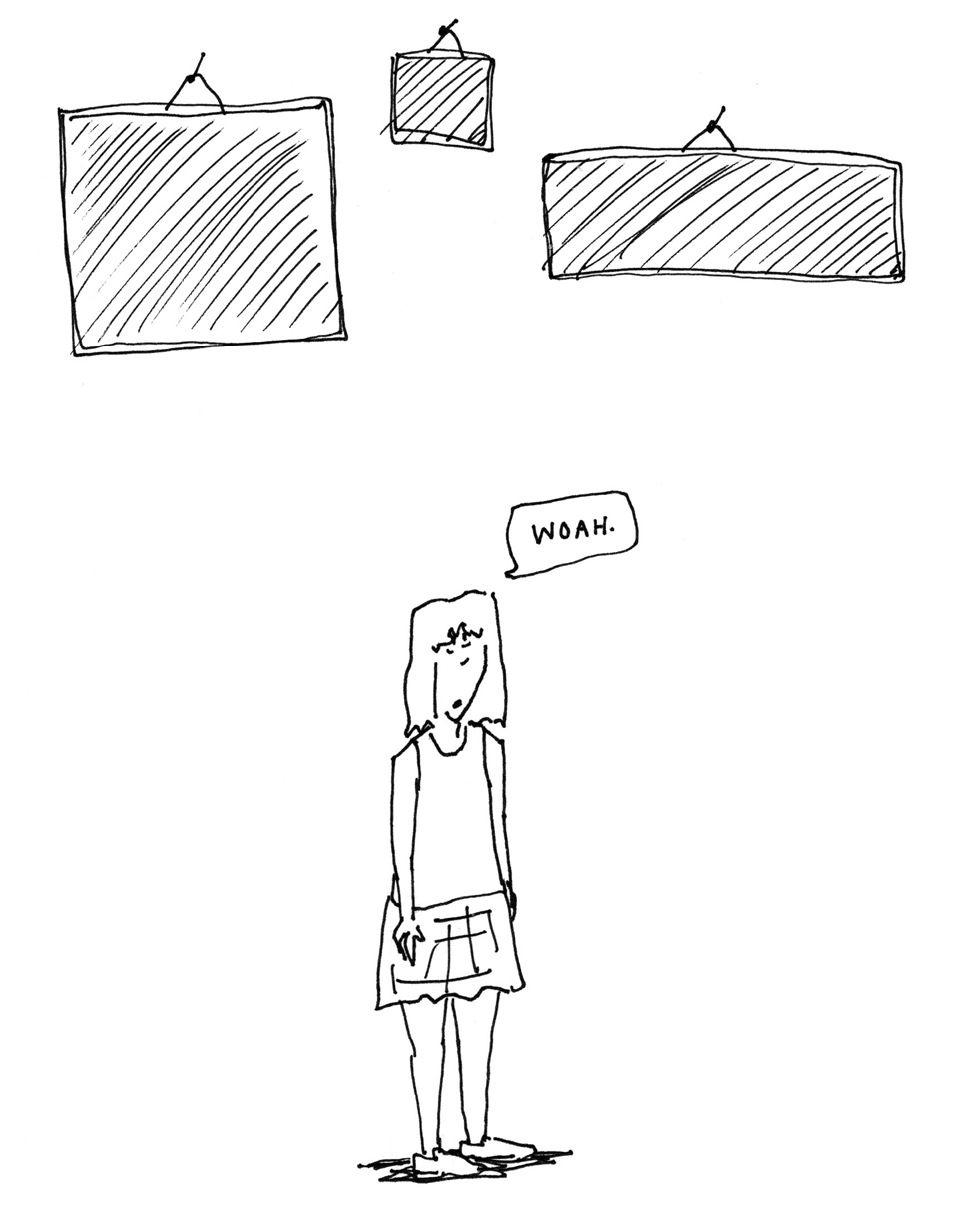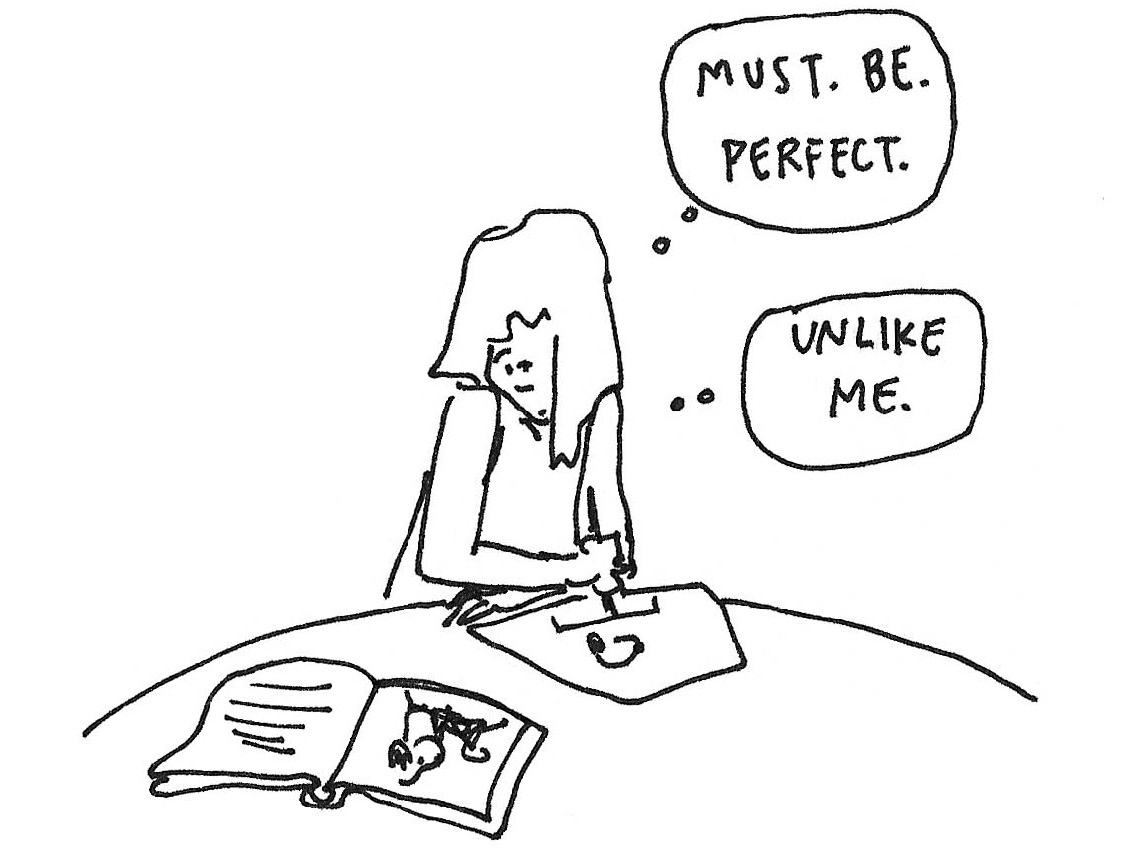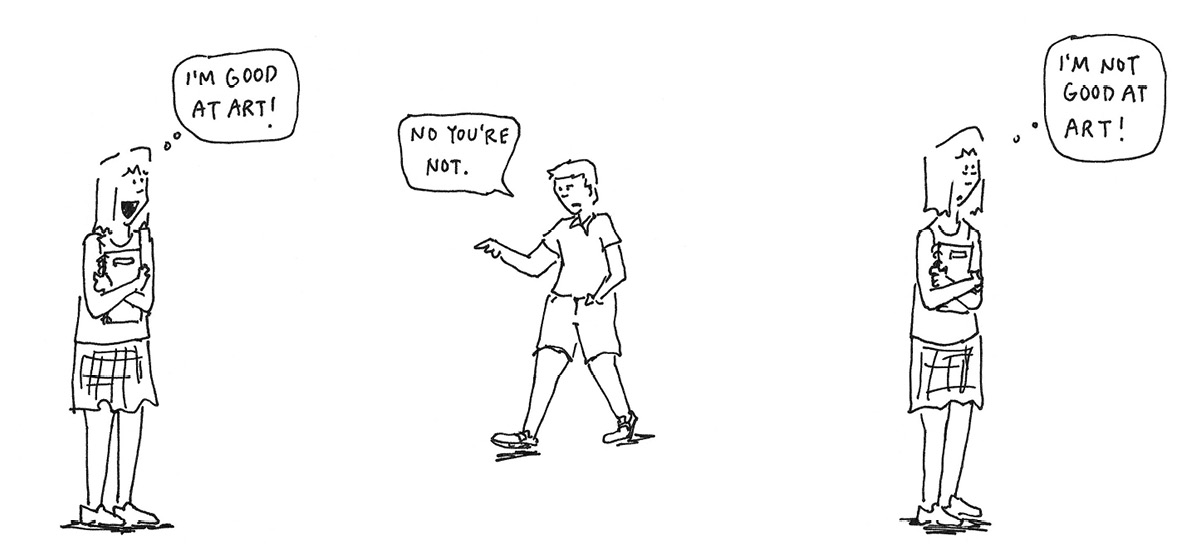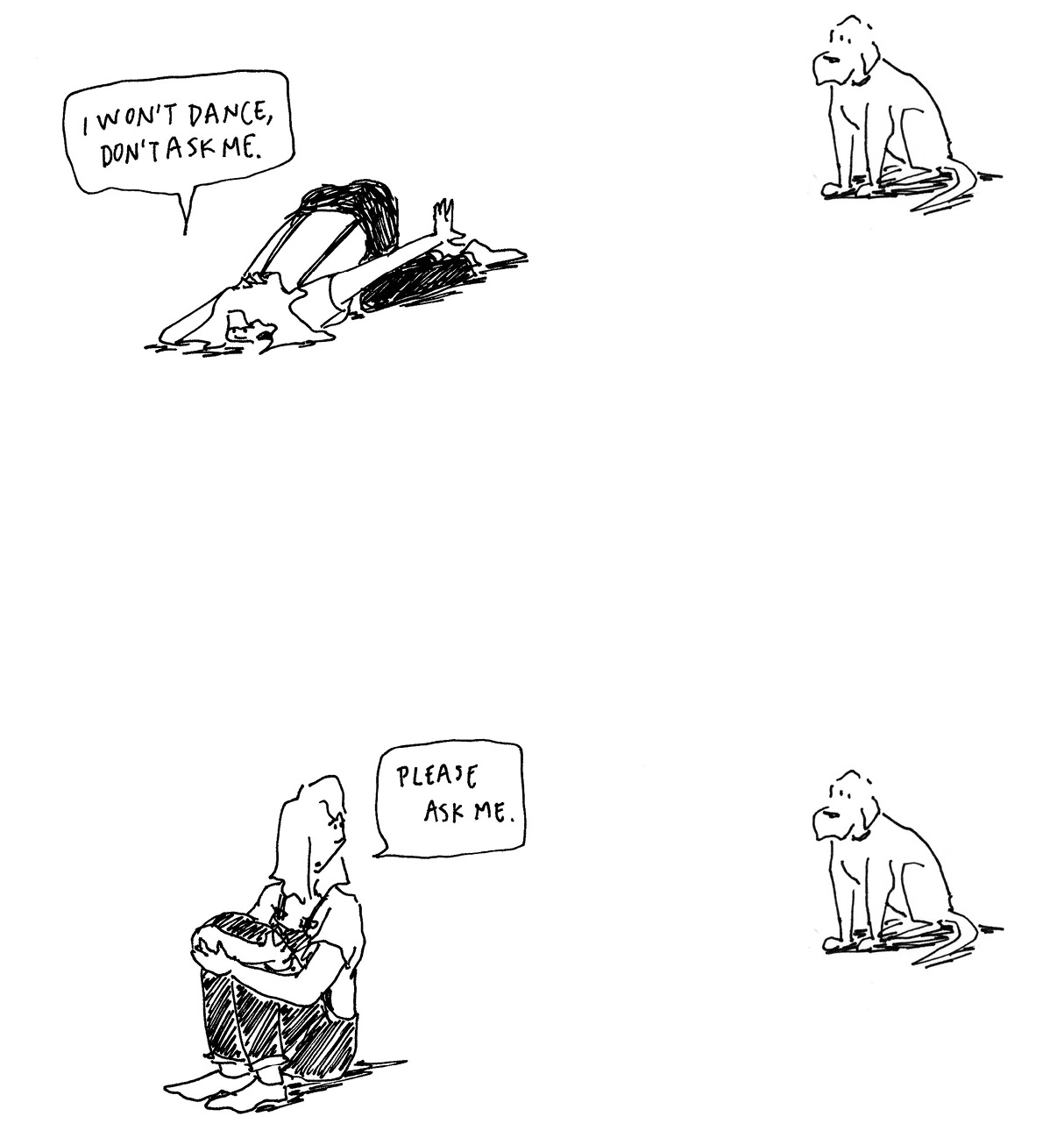

Hilary Fitzgerald Campbell
 here are so many topics and themes and recurring jokes in the wonderful world of Peanuts; if it were allowed I would just sit here and write a list of all my favorite cartoons.
here are so many topics and themes and recurring jokes in the wonderful world of Peanuts; if it were allowed I would just sit here and write a list of all my favorite cartoons.

But since I don’t have a podcast called My Favorite Peanuts (yet), and since we all have short attention spans, I’m going to write about my two favorite topics, which I believe are intrinsically connected: disappointment and dancing.
Among the thousands of life lessons found throughout Peanuts, I believe there is one that stands out among the rest: At the end of the day, you can either be disappointed, or you can be dancing, but you cannot be disappointed while you’re dancing. So take your pick.
To begin to explain this, I have to go back and start at the beginning of me and Peanuts. The beginning is often a good place to start.
I was born into a family that was already very into Schulz. I’m sure there are many of these types of families. You’re probably from one, or maybe you will start one, or maybe you wish you were from one. In which case, feel free to join mine! Each of my parents is one of seven children, I am the youngest of four. There are so many cousins, we wouldn’t notice or question your presence at the family reunion.

My maternal grandfather, Dr. Daniel Vaughan, was golfing buddies with Charles Schulz, Sparky to his friends. In 1964 Grandpa Dan cofounded a pro-am charity tournament in San Jose and Sparky did custom drawings for it for the following twenty or so years. I grew up inside a home filled with Schulz sketches addressed to my mother and original cartoons that referenced an ophthalmologist in San Jose, that of course being my grandfather. I already, and quite literally, had someone to look up to.

But that someone, at first, was not Sparky. It was Snoopy. Here we have not only an adorable cartoon dog, but one that dances. I loved dogs and dancing, so I believe that is what they call “kismet.”

Grandpa Dan gave me my first Snoopy doll when I was probably about six or seven. It was one of those authentic Snoopys. Not those plush things you see at every drugstore across the world these days. This Snoopy was made in San Francisco in 1968 (now that I think about it, it’s incredibly impressive Grandpa Dan hung on to this thing until 1997). I have slept with it in my arms nearly every night since. As a twenty-seven-year-old, I’ve even boarded planes clutching it. It elicits a certain concerned look from the flight attendants and, like Charlie Brown, I’m almost always looking for sympathy.
Snoopy was essentially a god. His style, his moves. I wanted to dance just like him. His hands in the air, his feet, everywhere! He always embraced the music, and usually alone. Who needs a partner when you’ve got two feet? Between Snoopy and my mother, I had two dancing role models to set me up for complete success, at least on the dance floor.
Second to dancing, the thing I loved the most was drawing. When I began to draw, I was extremely concerned with my ability to draw Snoopy and Charlie Brown just like Schulz did. No tracing, I needed to be able to do it myself. Get all the strokes and shapes just right. Schulz, without knowing it, taught me how to draw. I think a lot of his expressions (and, well, his whole outlook on life) still exist in my work today.

In an effort to keep me entertained, my parents bought me many Peanuts books for me to copy. The more I copied, the more I read, and the more I read, the more my connection grew. This was more than cool drawings of a beagle around our home. I still loved the dancing bits, but this stuff was hitting my little soul. Hard.
By age ten, I was in the height of my “copying Snoopy” phase. I believed myself to be a young artist. Fully equipped with self-confidence and self-doubt, with contradicting thoughts like “I’m incredibly unique and important” and “No one really wants me here, maybe I should go home and watch a movie instead.” And then, one day in fourth grade, something happened. Sammy Wallace told me that I was, in fact, not a real artist because I was copying someone else’s work. Plus, I used an eraser. His sister Carly did not use an eraser, and she was definitely a real artist. I was horrified. I was embarrassed. I was Charlie Brown.

All my fears were confirmed. Clearly, everyone at school thought I was a joke, the laughingstock of all the other fourth-grade artists. No one liked me; in fact, everyone hated me.


That was the moment Peanuts started to change for me. I like to think all Peanuts readers have some sort of pivotal memory in their life when the cartoon took on new relevance. Almost too much relevance. I wanted so badly to be liked by everyone, just like Charlie Brown, and somehow nothing was working out for either of us. It never would. And yet . . . there was still this hope inside of me, that maybe things would change. Maybe one day, I’d be as cool as my big brother, maybe I’d be the best dancer at the party, even know how to tell a good joke without messing up the punchline! That push and pull of hope and despair, expectation and disappointment, in a nutshell, is life. And life is a Peanuts cartoon.
This revelation wasn’t exactly funny to me at first, but I did feel very understood by the gang. What started off as an innocent love affair with a group of kids and their beagle soon became a heavy-duty, serious relationship that would shape my understanding of myself and the world around me. These weren’t jokes, but tales of love, loss, and the human condition! Peanuts taught me that despite the little engine of hope inside you convincing you otherwise, you know timing will always be a little off with you and the Little Red-Haired Girl, Christmas will never be quite as amazing as you expected, and you’ll never be satisfied with what’s in your bowl. So you better take what you can get because, happiness is . . . fleeting.
Or as Linus would put it, “Good things last eight seconds. Bad things last three weeks.”
There are so many ways in a Peanuts cartoon that you can be disappointed. You can be disappointed at home, in love, at school, on vacation, over holiday, during baseball, golf, or any sport under or out of the sun. You can be disappointed in a kite, a book, a play, your classmates, your parents, your friends, and even your dog.
Most importantly for each of these li’l folks, if all else fails, you can be disappointed in yourself. Who else is there to blame, Charlie Brown, when you’re the one setting the high expectations?
Every day they have a list of great expectations of how their day will go, and by age five they are learning that life is mostly not going to go as planned. Lucy will “probably never get married” and as much as Peppermint Patty studies she will somehow always know less than before. I think Schulz could have written a great self-help book entitled How to Be Disappointed. In fact, if he were coming up today, literary agents would probably be forcing him to do so.

Let’s examine some of my favorite examples of disappointment in Peanuts . . .
CHARLIE BROWN IS the king of disappointment. He’s been disappointed in everything and everyone. His dog has forgotten his name, his kite can’t keep away from the trees, and no matter how much they practice, his baseball team will never win a game.
If the world is not disappointing Charlie Brown, he’s disappointing them. Why can’t he just take his therapist’s advice and “snap out of it” already?
More than anything, Charlie Brown is disappointed in love. Will he ever be loved by the Little Red-Haired Girl or will he have to settle for a peanut butter sandwich? Luckily, Charlie Brown has an amazing ability to turn the disappointment in his relationship (or lack thereof) into complete dissatisfaction with himself. One of the best examples of this is when Charlie Brown is so mad at himself for not talking to the Little Red-Haired Girl, telling himself as he walks away, “I hate myself for not having enough nerve to talk to her!” and then, after a moment, “Well, that isn’t exactly true . . . I hate myself for a lot of other reasons, too. . . .”
That’s what I love about Peanuts. The disappointment is the joke. When you learn that, you learn to laugh at yourself and that is so important for survival.

It’s not just Charlie Brown who has been let down, time and time again. Lucy is also frequently disappointed. If it isn’t with one of her patients, it’s always with her brother. She cannot get him to ditch that blanket. If only she could’ve had a better brother, one with more personality. In one strip, Linus confronts Lucy about this, asking, “Why should you care if I have any opinions or personality or character?” Lucy responds, “Because if you don’t have any character, it’s a reflection on me!”
Like Charlie Brown and the Little Red-Haired Girl, Lucy’s love life with Schroeder continues to fall short. Try as she might, she may never convince him to pay more attention to her than to the piano.
Sally, though innocent, is no stranger to disappointment. Her latest field trip is nothing to write home about, literally, and “What’s so much fun about a balloon” anyway? According to Sally, nothing. What a letdown.
Along with her brother and Lucy and pretty much the whole cast, love is a disappointment for Sally. Linus, her sweet babboo, still hasn’t asked her out yet. Even when she’s dropped so many hints! And who can forget when she practices all week for her role in the Christmas play, only to get onstage and recite “HOCKEY STICK!” instead of “hark!”
Sally is not the only one to be let down by the buildup of the holiday. Lucy waits for what seems like forever for Christmas to arrive, counting down the months, the days, the hours, the minutes . . . only to leave her completely unsatisfied . . . sigh. Will we ever be happy?
Linus has great resilience for his disappointment in the Great Pumpkin. My favorite example: He starts off writing a letter to express just how disappointed he is that the Great Pumpkin did not show up yet again, noting, “If I sound bitter, it’s because I am.” But before he can finish the letter and save some dignity, hope finds its way back in. After writing off the Great Pumpkin for good, Linus adds, “P.S. See you next year.”
That is the thing about disappointment; it cannot exist without expectation. Try as they might, these kids are never going to get rid of expectation. One day, sitting at the brick wall, Linus shares his worries about his worries, lamenting, “I guess it’s wrong always to be worrying about tomorrow. / Maybe we should think only about today.” Charlie Brown responds, “No, that’s giving up . . . / I’m still hoping that yesterday will get better.”
Hope lives on, and so does disappointment.
Schroeder’s friends will never understand Beethoven. No one will want to listen to Woodstock’s long-winded stories. Peppermint Patty will never be appreciated as the great caddy she knows she is, and her gal Friday, Marcie, will probably never stop being disappointed in, well, Peppermint Patty. “Always an embarrassment, sir.”
So it would appear that, according to Schulz, just about anything can and will let you down.
As dark as all of this was for a preteen to come to terms with, there was one thing that stood out in the comic, one sigh of relief from the existential crises of childhood and beyond. While everyone’s life is going horribly downhill (Sally signed up for conversational French, not controversial French, as she thought), there is this dog. And there was a lot of frustration with this dog because he is too happy and always dancing.
Lucy, honestly, can’t stand it. On more than one occasion she’s yelled at a dancing Snoopy, “With all the trouble in this world, you have no right to be so happy!” It drives Charlie Brown nuts as well. “What makes you think you’re happy?”
By default, dancing becomes one of the only pure moments of bliss: the rare time when you cannot worry or take yourself too seriously, you simply cannot be upset! Lucy could shout, “Floods, fire and famine! / Doom, defeat and despair!” but dancing saves you from all life’s downers. “Nothing seems to disturb him!”
Dancing can never be a disappointment. It is the savior of sadness.
It is no surprise that the one who dances the most is a dog. As Lucy says, “It’s easy for him to be so happy . . . he doesn’t have any worries!” The deep irony is the idea that Snoopy is a ball of pure happiness, unaffected by consciousness. That is wildly untrue. Snoopy has so many disappointments of his own. He wishes he were anything but a dog. Why couldn’t he be an alligator or a snake! Or better yet, a World War I fighter pilot?
I particularly love the contrast between Snoopy’s hopes and dreams, which are way out of the realm of possibility, and those of someone like Lucy, who wants to be a psychiatrist. She could very well become one but Snoopy will always be a dog.
“Yesterday I was a dog . . . today I’m a dog . . . / tomorrow I’ll probably still be a dog . . . / *sigh* / There’s so little hope for advancement!”
Even though his aspirations may be futile, they embody the crises of consciousness we all know too well. There is no satisfaction! Plus, whenever Snoopy does try to live out his fantasies, he usually comes to the conclusion that he isn’t suited for the role. Can’t be a hunter because of his “weed-claustrophobia.” Can’t be a giraffe because it’s “too hard on the neck.”
As much as he loves to golf and get some quality time in on the typewriter, all these activities often leave him a little discouraged. He may never be satisfied with life or food—“Needs salt!”—but dancing is one guarantee of a good time. With dancing, Snoopy can be himself! He can let it all go! Sure, he still hasn’t gotten his invite to play in the Masters, but it must be in the mail. Anyway, none of this worldly stuff matters while you’re doing the Charleston!
Though the whole gang likes to act as if they are very annoyed by all of Snoopy’s dancing, the fact of the matter is they are quite jealous. They wish they didn’t have to worry about being alive. Or do they?
One day, as Snoopy dances around, Charlie Brown comments, “I sure wish I could be that happy all the time.” Lucy replies, “Not me . . . / it’s too hard to feel sorry for yourself when you’re happy.”
Lucy’s response here might be the most definitive cartoon in defense of my argument. Sure, they could be happy, but they are choosing not to be, because it’s much more entertaining to live the emotional roller coaster of hope and despair. But you do always have the option to dance.
Every once in a while, they give in to Snoopy’s ways and when they do, they love it. In one strip Schroeder presses a frustrated Lucy, “What in the world do you have to worry about?” Lucy thinks a moment, realizes what the answer is (nothing), then joins Snoopy with a huge smile on her face. And why wouldn’t she love it? Dancing is great! If only they’d let themselves do it more often . . .
“To dance is to live! / For me, dancing is an emotional outlet . . . / I feel sorry for people who can’t dance . . . / If you can’t dance you should at least be able to do a happy hop!”
Snoopy’s words, not mine.
Lucy is usually the one who succumbs to Snoopy’s carefree calypso, “If you can’t lick em, join ’em!” Though she tries very hard to resist most of the time. One of my favorite dancing cartoons that has really stuck with me has Lucy screaming at Snoopy, “Just because you’re happy today, doesn’t mean you’ll be happy tomorrow!”
Isn’t that the whole reason Snoopy chooses to dance? Who knows what small disaster is on the horizon. Your novel could be rejected, someone might call you “fuzzy face,” or even worse, you could find out there’s a new “No Dogs Allowed” sign at the beach.
What is life but a series of small disasters with a little dancing in between!
They say don’t sweat the small stuff. But for the Peanuts gang, small stuff is all they’ve got and they are sweating. When each day is another question of whether to be disappointed or to dance, the answer is simply which kind of sweat you’re looking for.
Of course there has to be a balance. As much as we’d like to, we can’t always be dancing. And I never meant to suggest there is any problem with being disappointed. It’s good for you. I don’t know who I’d be if I wasn’t always just a little let down. I would probably be a very boring person. Peanuts would be a very boring cartoon. They say comedy is tragedy plus time. The great comedy (and tragedy) in Peanuts is that every day there is newfound hope, as Linus would put it, that they will grow up to be “outrageously happy!” despite all the evidence that points to the contrary. As if total satisfaction were something to be desired. If we were all outrageously happy, I have no idea what we’d talk about. And yet, the idea of happiness . . . sure sounds nice.
Maybe it’s because I read so much Peanuts as a kid or maybe it’s just who I am, but I find the balancing act between the fountain of hope and the forecast of disappointment to be the essence of life. It seems I wake up every morning cheerfully wondering . . .

Big or small, I know something will. Charlie Brown knows something will. Linus knows something will. We all know something will. But it’s fun to believe otherwise. It’s fun to believe Lucy won’t pull the football out from under you, even when you know better.
As an adult my hero has shifted from Snoopy to the creator of Snoopy. Through his work, Schulz taught me that in the middle of the mess of day-to-day life, the one thing I (and the Peanuts gang) can rely on for a truly good time is to dance. Like Lucy, it’s just a matter of whether or not I want to be pulled out of my pity party.

We’ve all got a little Snoopy, Charlie Brown, and ultimately Schulz in us. Sometimes our similarities scare me. When I saw the new Peanuts movie a couple years back, I recognized myself so much in Charlie Brown that I came home in tears. My mother had to put her twenty-five-year-old daughter to bed, crying . . .

And . . . that very well may be true, but, the next day, we had a glass of wine and ended up dancing all night to the Beach Boys and that was great, so I think that’s what Snoopy would call “par for the course.”